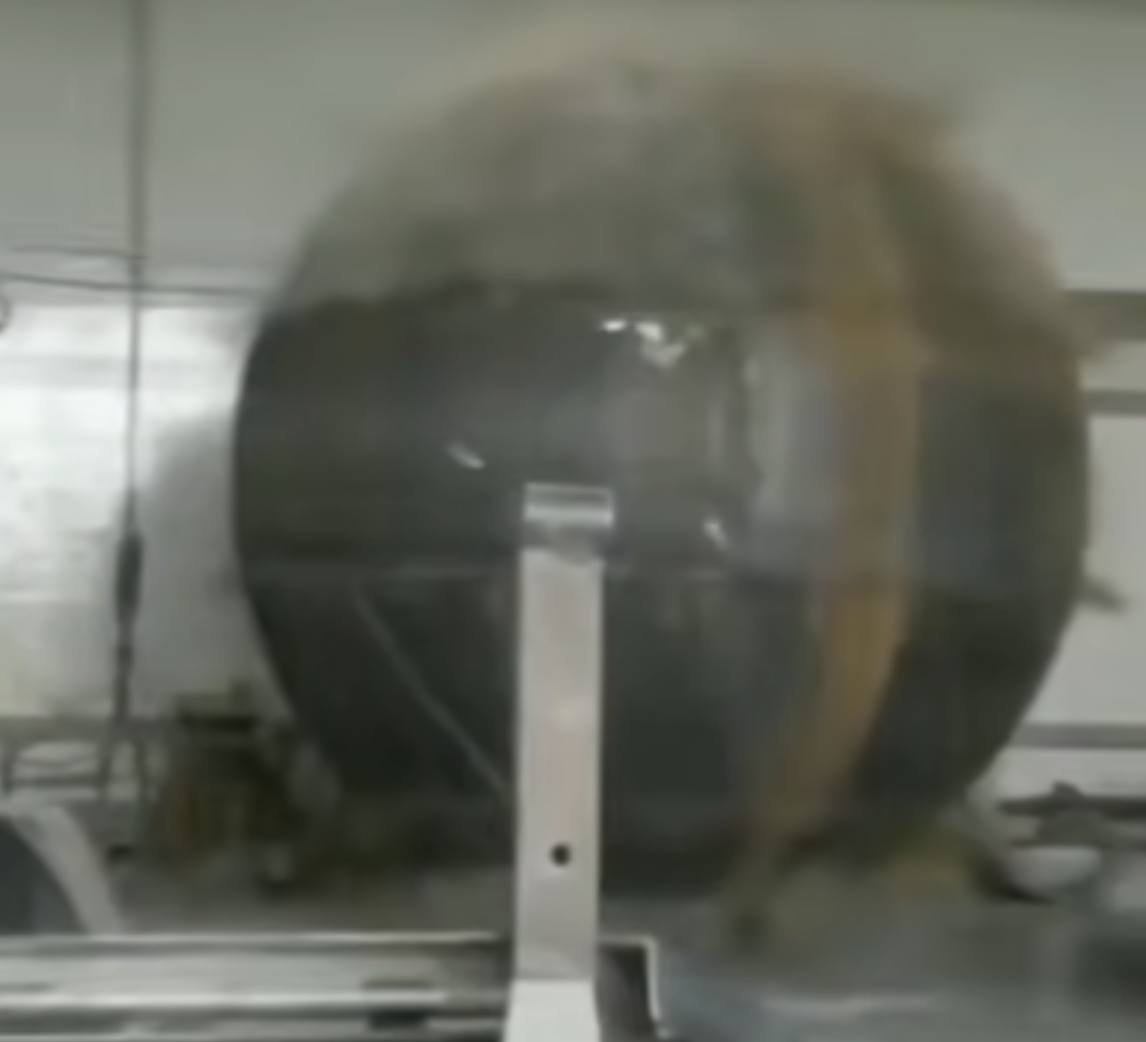SCHEMATIZING (23)
By:
December 21, 2023
One in a series of posts via which HILOBROW’S Josh Glenn will attempt to depict the intellectual and emotional highs and lows of developing a semiotic schema.
I’ve recently become fascinated with videos demonstrating how metal polyhedrons can be transformed into spheres through “explosive hydroforming.” It’s a manufacturing technique that uses explosions, as well as a fluid such as water (e.g., oil, gelatin, liquid salts), to create extremely high pressure — in order to press ductile metal (such as aluminium, brass, low alloy steel, and stainless steel) into forms that would be difficult to achieve in other ways. The process is also known as HERF (High Energy Rate Forming), and sometimes as “exploform.”
Hydroformed parts can often be made with a higher stiffness-to-weight ratio and at a lower per unit cost than traditional stamped or stamped and welded parts. Once upon a time, pressurized hydraulic fluid was pumped into a forming chamber, in order to shape metal. HERF techniques, which were developed in the 1960s — in the US, and the USSR — for constructing components for aerospace assembly and space exploration, utilize an explosive charge to create the necessary pressure. Recently, explosive metal forming has seen a resurgence due to the demand for more complex parts in smaller batches.
In geometry, an inscribed planar shape or solid is one that is enclosed by and fits snugly inside another geometric shape or solid. A polyhedron inscribed in a sphere has each vertex on the outer figure. (All regular convex polyhedra can be inscribed in a sphere.)
It helps me to think of a semiosphere as a figure that is both a polyhedron and a sphere. A sphere doesn’t have “territories,” the play of binary oppositions doesn’t work with a sphere; but a polyhedron doesn’t feel like a pocket universe, the way a sphere does. So these videos help me visualize and understand how a polyhedron and a sphere are the same thing… thanks to “exploform.”
PS: Consider Plutarch’s Quaestiones Platonicae, where he comments on Plato and Aristotle’s dodecahedron: “Is their opinion true who think that he ascribed a dodecahedron to the globe, when he says that God made use of its bases and the obtuseness of its angles, avoiding all rectitude, it is flexible, and by circumtension, like globes made of twelve skins, it becomes circular and comprehensive.”
MORE FURSHLUGGINER THEORIES BY JOSH GLENN: SCHEMATIZING | IN CAHOOTS | JOSH’S MIDJOURNEY | POPSZTÁR SAMIZDAT | VIRUS VIGILANTE | TAKING THE MICKEY | WE ARE IRON MAN | AND WE LIVED BENEATH THE WAVES | IS IT A CHAMBER POT? | I’D LIKE TO FORCE THE WORLD TO SING | THE ARGONAUT FOLLY | THE PERFECT FLANEUR | THE TWENTIETH DAY OF JANUARY | THE REAL THING | THE YHWH VIRUS | THE SWEETEST HANGOVER | THE ORIGINAL STOOGE | BACK TO UTOPIA | FAKE AUTHENTICITY | CAMP, KITSCH & CHEESE | THE UNCLE HYPOTHESIS | MEET THE SEMIONAUTS | THE ABDUCTIVE METHOD | ORIGIN OF THE POGO | THE BLACK IRON PRISON | BLUE KRISHMA | BIG MAL LIVES | SCHMOOZITSU | YOU DOWN WITH VCP? | CALVIN PEEING MEME | DANIEL CLOWES: AGAINST GROOVY | DEBATING IN A VACUUM | PLUPERFECT PDA | SHOCKING BLOCKING.


